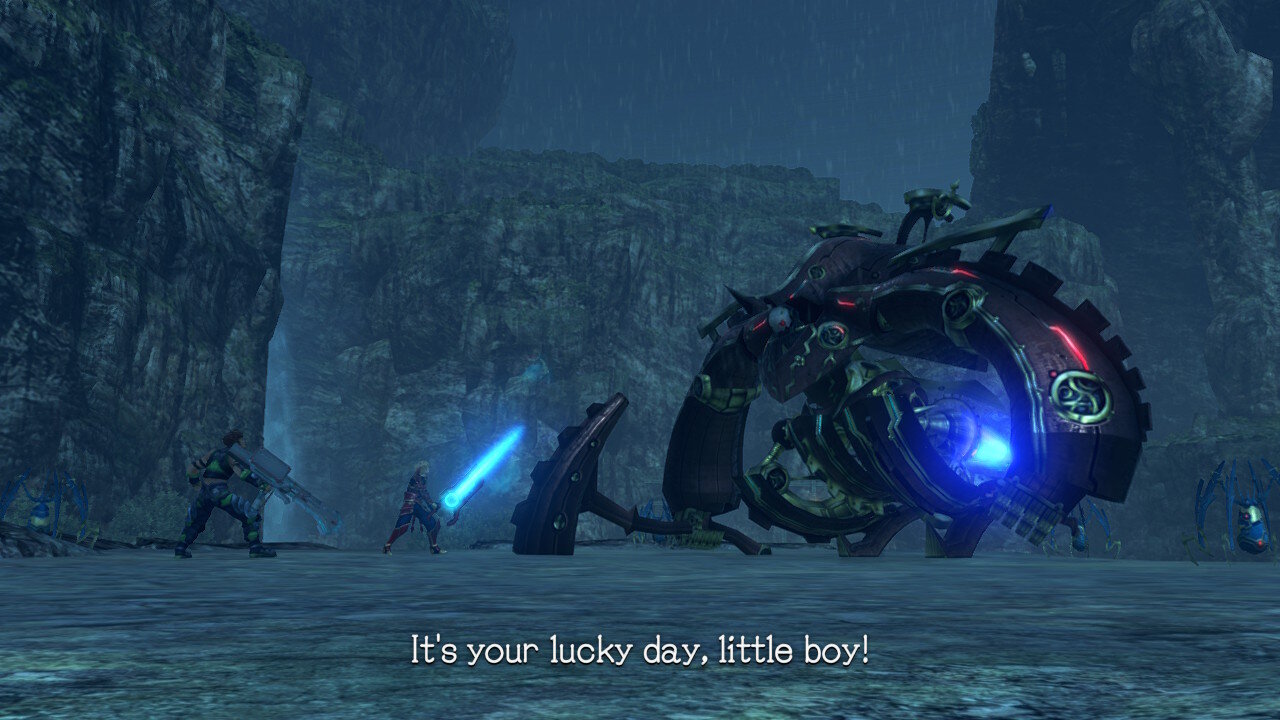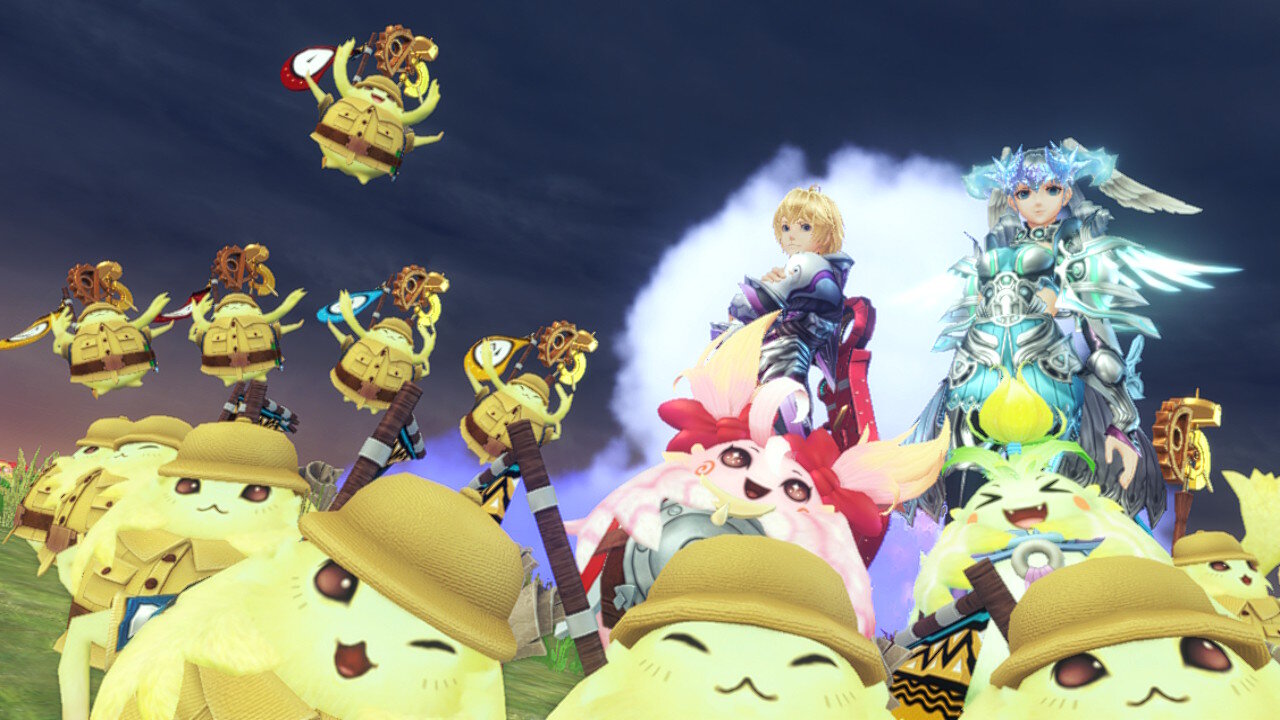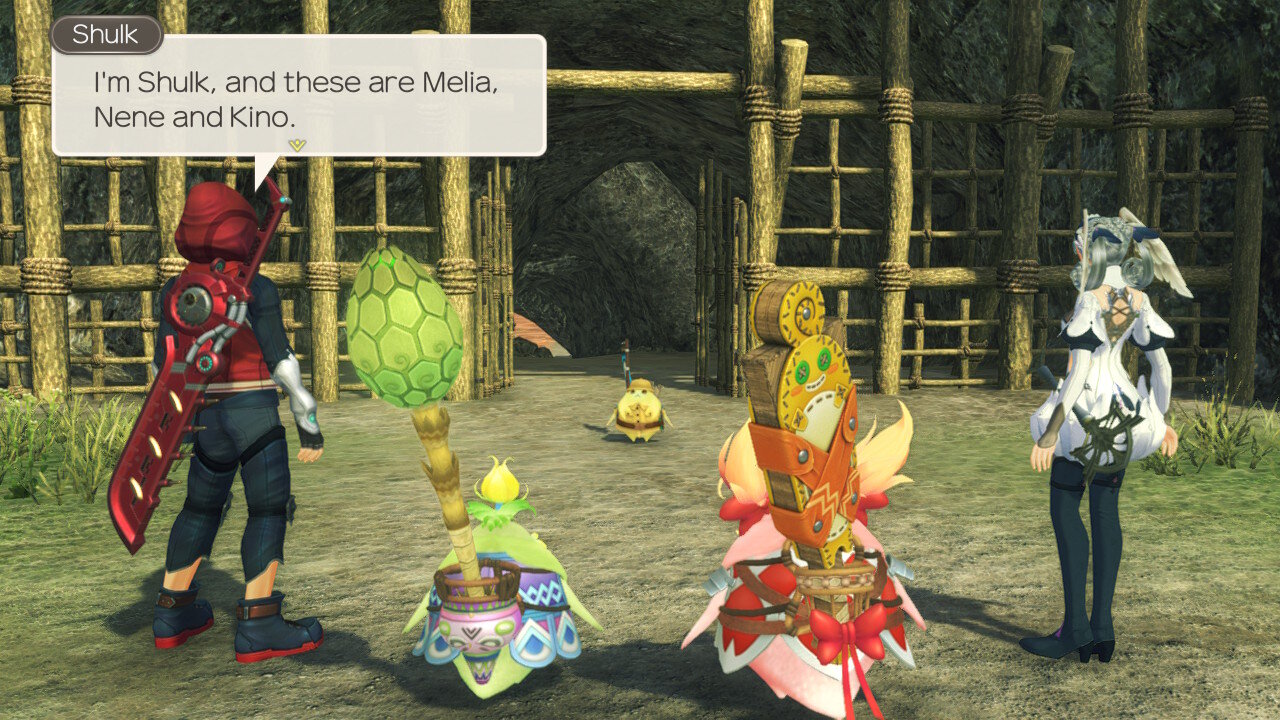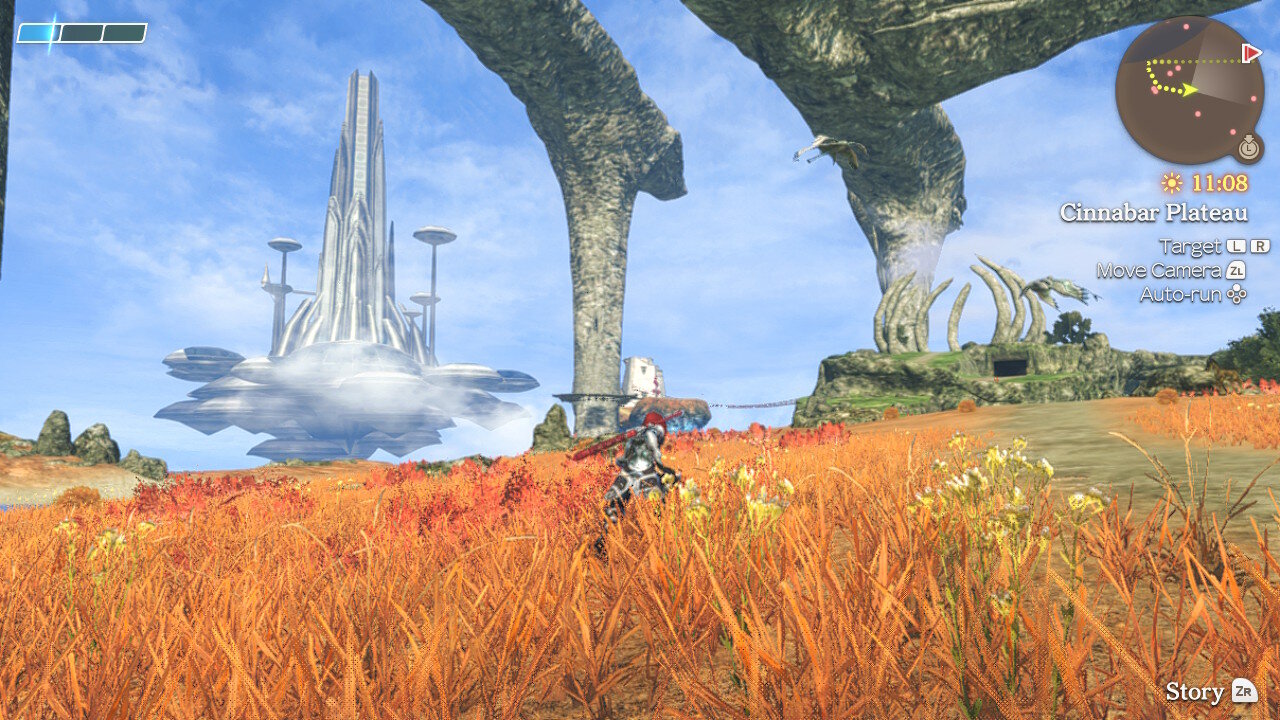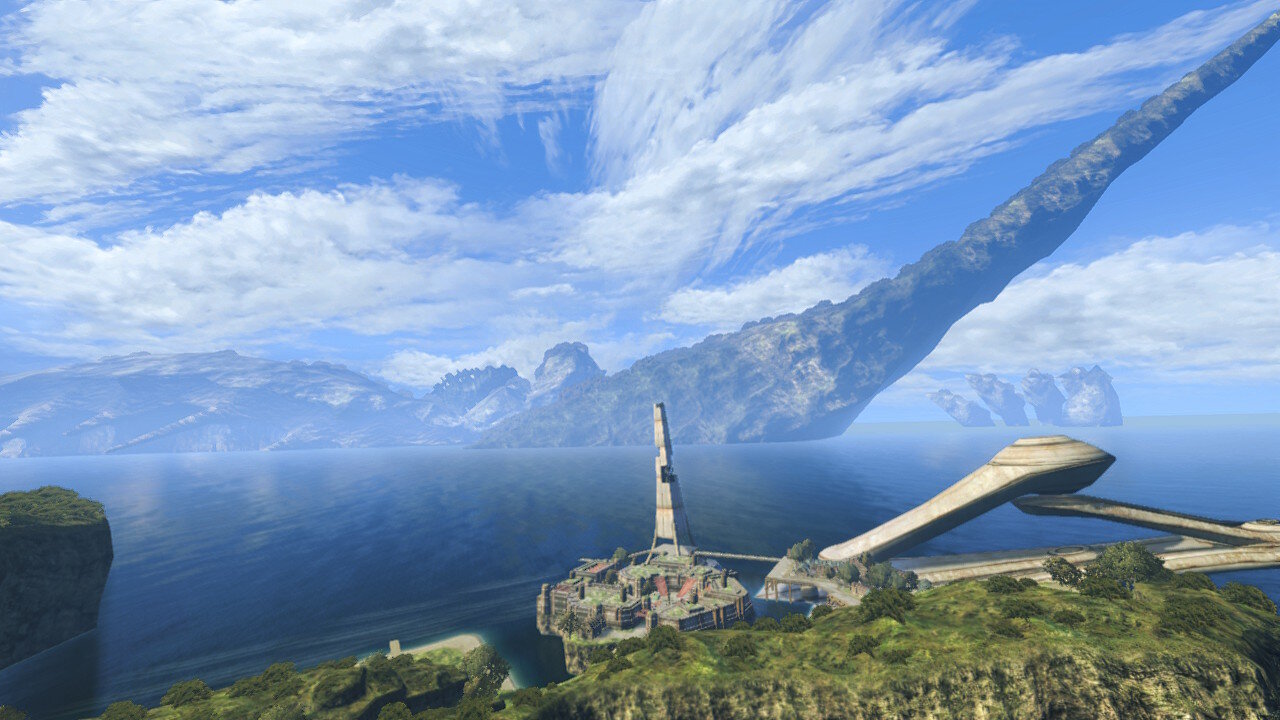When the term “Definitive Edition” is tossed around, it most likely means the collected works of any particular game and its additional add-on content. Sometimes; however, we get a remastered title spruced up with all new visuals or some quality of life updates that can breathe new life into an old classic. When It was announced that Xenoblade Chronicles would see such a remaster, I was excited to see what Monolith Soft and Nintendo would do to not just bring the game to the Switch, but the advancements the Xenoblade Chronicles 2 engine could provide. With an all-new soundtrack, improved visuals, and revamped UI elements, not to mention improvements to a variety of core systems, Xenoblade Chronicles: Definitive edition certainly arrived on the Switch in style, even if I still enjoy the second game quite a bit more.
It’s not long into Xenoblade Chronicles where you will immediately notice the visual upgrades given to the title, especially if your time with the game was spent on the 3DS version. Here, on the Switch, we have vastly improved textures, brand new environmental details, and rather impressive character models, even if some details like Shulk’s sleeves are visually identical to that of the original Wii release. While it’s unfortunate that some parts of the game don’t feature the same level of remastering than others, there is still no doubt that much of the original has been completely overhauled and looks rather impressive nonetheless. The most notable improvement to this remaster is through the new faces given to the cast. While they now share more aesthetically with Xenoblade Chronicles 2, they do lose a little bit of their original look and this may not sit too well with those that didn’t care for the more anime-infused looks brought on with its sequel. And while the characters are vastly more detailed, they still contain the same awkward walking animations that are a pain to witness all over again.
I’ll do what I can to refrain from too many comparisons to Xenoblade Chronicles 2 as while I did enjoy both games, I still found the story, world, and characters in its somewhat-connected sequel to be far more impressive, but this doesn’t in any way discount how much fun I had here with this remaster. Both games offer up a very different feel from one another and each title has highs and lows when it comes to a variety of mechanics and features. Considering the original released back on the Wii nearly a decade ago, it’s also likely that many fans of the series started with Xenoblade Chronicles 2 and have waited for this remaster to happen. That said, I will try to make the game stand apart on its own and limit my comparisons when needed.
The story of Xenoblade Chronicles takes place centuries after a great battle saw two god-like beings; the Mechonis and the Bionis, locked in battle and severely wounding each other in one last attack. As their bodies remained connected by their swords, cut deep into one another, life began to spring up upon them. The Bionis made host to organic life whereas mechanical creatures called the Mechon found a home on the Mechonis. Eventually, and without warning, the Mechon invaded the Bionis and were only thwarted by a powerful sword called the Monado, wielded by a lone swordsman named Dunban, who eventually lost control of the blade and ended up losing the use of his right arm in the process. A year later, that very sword found a new owner in Shulk, a young man who uses it to stop yet another invasion, this one by Mechon with facial features that can withstand the power of the sword. After a tragic event takes place directly in front of him, Shulk sets forth to not just discover answers as to why he can wield the blade but also to seek revenge upon these new mechon threats.
Throughout the story, there are plenty of twists and turns, but unfortunately, none of them are particularly shocking or unpredictable. You’ll see nearly everything coming from a mile away and the game also suffers from repeating much of the fact that Shulk can witness the future, a power given to him through the use of the Monado. While the future-sight is a big component of the story, there are so many times where he repeats the notion of that very power as if to tell us again for the first time. While there are some fantastic moments on display because of this ability, the story falls into plenty of tropes that play out far too similar and too often. Now, that said, the game does a great job at giving its cast some decent arcs, and pretty much everyone gets something fairly important to do. The main story should take you around 50-60 hours, with almost double that for diving fully into the hundreds of side quests available, even if many of them are nothing more than your standard kill this enemy or the typical fetch quest.
Joining Shulk on his quest for revenge is a cast of six additional characters. You’ll start with Fiona and Reyn, who are childhood friends to Shulk, with Fiona being the sister to Dunban, another character that will join up alongside the group. You’ll also be accompanied by Sharla, a medic they encounter on their travels, and eventually come into contact with Melia, the daughter of an Emporer, and lastly, a Nopon named Riki, who is forced into your party by his village Chief who more or less just wants him out of his hair. Despite some of the fun designs, I didn’t find any particular member of the cast to be terribly memorable, and while they have given each of the cast some enjoyable moments to shine, no one really stood out to me. This is largely due to several characters treading on the same beats over and over again, becoming somewhat one-note for more than half the game. Without spoiling anything drastic, the final addition to your team allows that character to probably become the most fascinating of the bunch, especially with the supporting cast that surrounds them in the late game. While some of the supporting cast members succeed in fleshing out the world, the same cannot be said for how they handle the antagonist of the story as it changes so often that once I eventually got to know one of them, it moved onto someone else that I just wasn’t invested in. Like it or not, I found Malos in XC2 to be the superior villain of the franchise hands down.
The story of Xenoblade Chronicles is told as you progress through some impressively large locations, but there are massive chunks of the game devoted to just the side quests alone, meaning that if you bee-line it just for the end credits, you’ll be missing out on more than half of the sprawling locations created for the game. Now, granted, this scale can present some drastically and ridiculously long hallways, such as your encounter with a certain gun-toting Mechon, but thankfully, these types of areas are few and far between. The problem with some of these environments is that while much has been improved visually, there is a lot of details rendering in front of you, such as the wide-open fields of grass, or surprisingly, the lack of tree branches moving around in the wind, a detail that even made it into the 3DS version. That sort of detail isn’t a deal-breaker, but it certainly is rather odd not to see additional details like these being added or converted over when the game was rebuilt for newer and more powerful hardware. While much of the game certainly looks drastically better, it’s odd that some smaller details are almost entirely left out.
Where Xenoblade Chronicles 2 worked its combat largely around its auto-attacking system, as well as its gatcha-styled Blades, the battles here feel and act drastically different almost across the board. While there are some strong similarities, combat here is more focused around cool down moves called Battle Arts that you select and choose from an assortment and place on a skill bar for use in combat. Xenoblade Chronicles 2 placed their moves around the format of your controller’s buttons whereas here, moves are spaced out like keys on a keyboard, making the reaction time a bit slower to use in combat, but you do get more moves to choose from as a result. Each of the Arts you choose to equip to each character can be used in combination with others and during Chain attacks depending on their color to keep the damage going as you link numerous chains together.
Similar to that of XC2, characters can break your opponent’s focus and use other attacks to topple them, giving you a certain time window where they are drastically vulnerable, allowing you to pile on the attacks and drain their health bar with little to no resistance. As you keep attacking enemies during battle, you’ll gain energy in the party gauge and this is how you’ll use those three segments in the top left corner to either heal downed companions or for use with the chain attacks, where you’ll choose moves while prepping for some quick B button prompts. Certain attacks you can equip to your Arts Palette are direction based, such as Shulk’s backstab that does significantly more damage when attacking from the rear, which in the Definitive Edition, is now illustrated by a flashy icon prompt to ensure you’re getting that attack just right.
One of the abilities that Shulk has during combat is knowing when a devastating attack will be unleashed upon him or another member of the group. Having this forehand knowledge will give you a few seconds to either have another character pull aggro on the boss away from the doomed character, or possibly have Shulk use the Monado and one of its unique moves to summon some barrier shields to defend against the attack. It’s a decent mechanic that could have been something very impressive but failed to really grab me or serve a better purpose than its somewhat shallow offering. While it’s easy enough to avoid the attacks, taking hard hits can often result in needing health fast, and frankly, there isn’t a lot of options for healing, While Shulk, Melia, and Riki have basic healing skills, only Sharla is reliable at healing multiple people at once, meaning you’re unlikely to keep her out of the three-person party. Unlike the bouncing potions filling the battlefield in XC2, you’ll have to rely on your Battle Arts to stay alive longer in battle. XC also comes with a few different difficulty settings including one where you’ll control the amount of experience given to each character, making the game either harder or easier depending on what you do with it.
During your adventures, you will complete quests and gain favor with certain areas, and this powers the Affinity Chart, a massive map of all the links you’ve made along the way. As you complete quests, certain NPC’s and the surrounding area will open up more quests. For as important of a system, it’s rather easy to gloss over this as it isn’t really focused on much and may only interest players who want to fully explore everything this game has to offer. The last system to discuss is the Skill Tree system that uses the bonds between characters to equip certain perks or stat boosts between each other. In all honesty, the Affinity and Skill Tree systems can often feel more convoluted than anything else in this game and your mileage may vary on how invested into these systems you get. On harder difficulties, you’ll want to really take advantage of the stat boosts you’ll earn across each character, but for those just wanting to take the game’s story in, these systems can be somewhat overlooked. One key point to mention is that while you can equip a variety of different armor types to your characters, heavy armor, for example, is something that must be unlocked via this system, so it does pay to at least dabble a bit into it here and there.
Added to the Definitive Edition is an all-new epilogue that follows the adventures one year after the events of the main game. You’ll play as Shulk and Melia, as the two travel to Alcamoth to discover what happened to Melia’s former Kingdom. It’s a decent enough story that also introduces two new Nopon characters in Kino and Neno, who are the children of Riki. The overall length of this added chapter is around 8 hours and much of that is sunk into a lot of backtracking and levels designed on you taking a fair size walk to go to areas that are either to high to jump to or too far below to survive the fall. While the story itself is decent enough, the antagonist is lacking and just isn’t interesting in the slightest. Where Xenoblade Chronicles was Shulk’s story, this added chapter is entirely based around Melia, who didn’t really have a lot to do the first time around. The game also simplifies some systems by neglecting both the Affinity and Skill tree systems and instead of chain attacks, you’ll recruit up to a dozen Nopon explorers to pull off some insanely OP attacks instead. While it wasn’t a big issue, I found it rather odd that you are given two characters to join up with Shulk and Melia instead of one, since one character is going to always sit out the added content due to a three-person party limit, and since Kino took the place of Sharla as a healer here, Nene only popped into my party a few times so I could at least try her. Considering Xenoblade Chronicles X tackled four-person parties, it’s a shame that this content pack didn’t just allow you to have that as well, making the entire team active for the short campaign.
While both the base game and the Future Connected add on chapter both look great, I was sort of disappointed to see the game run at such a low resolution being the game is as old as it is. While much of that is likely due to poor optimization of the XC2 engine, it still comes across as being a tad disappointed to see the game run at 504p to 720p when docked, and 378p to 540p when portable. While both options run at a fairly consistent 30fps, shadows and some environmental details take a huge drop when playing portable, but regardless, it still is amazing to see it looking as good as it does portable given the awful quality of the 3DS version. While the game features both the original and newly arranged soundtracks, a lot of that can be undone by the constant repeated battle chatter during combat. While it was fairly bad in Xenoblade Chronicles 2, it’s doubly worse here, and surprisingly, it’s even as bad in the bonus chapter. While XC2 saw most of the repetition patched out, I’m somewhat surprised this wasn’t addressed and fixed here as well as hearing Melia shout “What? How can this be?” six times IN A ROW made me mute most of the longer combat encounters entirely.
Xenoblade Chronicles: Definitive Edition took a while to really get me into its story, given the expectations of what I had heard about the original. While I do still prefer its sequel, that’s not to say that I didn’t find this game to be entertaining or spectacular at times. The characters have some great stories and moments to shine, even if I didn’t find them to be terribly memorable. I wish the overall villain had a bigger presence here as I feel it's one of the more weaker components to the game, given that Malos was constantly present in XC2 and did a lot to fuel my interest in him as a bad guy. Regardless of what each game offers or doesn’t is somewhat irrelevant in the grand scheme of things as both games offer up some solid storytelling and heart-pounding action. I quite enjoyed my time with Xenoblade Chronicles and despite my issues with the title, it was certainly worth the wait and it gave me a solid adventure to take part in.
Xenoblade Chronicles: Definitive Edition was purchased by the reviewer and played on a Nintendo Switch in both docked and handheld play.
All screenshots were taken on a Nintendo Switch.







